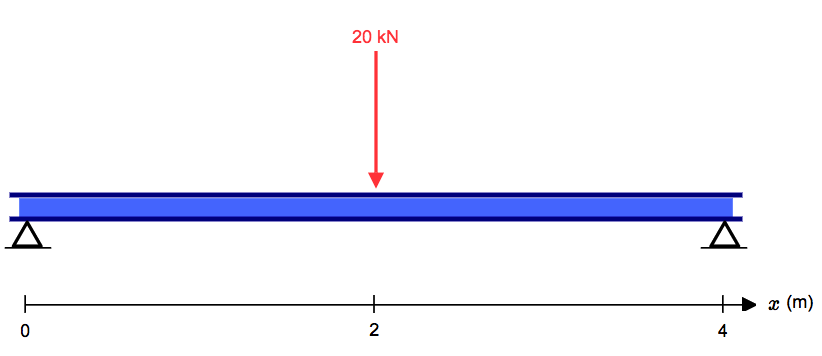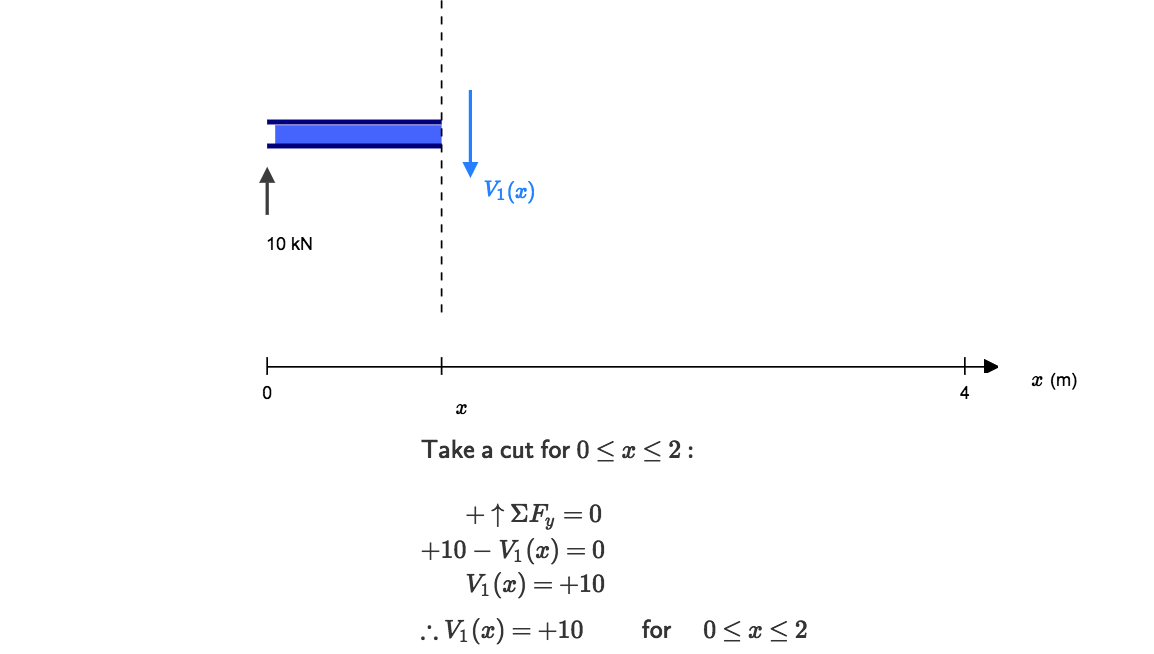|
Share this page: |
|
|
How to find a Shear Force Diagram (SFD) of a Simple Beam In this tutorial, we will look at calculating the shear force diagram of a simple beam. This is an important concept to understand, as shear force is something a beam will need to be checked for, for a safe design. What is a Shear Force? Firstly, what is a shear force? A shearing force occurs when a perpendicular force is applied to static material (in this case a beam). Think of a knife cutting through a carrot. Imagine the beam is the carrot and a point load is the knife. As the knife applies a downward force, it cuts (or shears) the carrot. These forces occur along numerous points of a beam, and it is important to determine where these shears are at the greatest points as this may be where a beam fails. To calculate the shear forces of a beam, follow the following simple steps (as hand calculated by SkyCiv Beam Software): 1. Start with the far left side of the beam 2. Move across the beam It is much easier to understand when considering an example of a how to calculate a Shear Force Diagram. So let's consider the following example to calculate the shear force diagram of a beam:
Source: SkyCiv Beam Step 1:After calculating the reactions at A and B, start the Shear Force Diagram at the first value of the force acting on the beam. In this case it is a +10kN due to the reaction at point A:
Source: SkyCiv Beam Hand Calculation Module Step 2:Keep moving across the beam, stopping at every load that acts on the beam. When you get to a load, add to the Shear Force Diagram by the amount of the force. In this case we have come to a negative 20kN force, so we will minus 20kN from the existing 10kN. i.e. 10kN - 20kN = -10kN.
Source: SkyCiv Beam Hand Calculation Module Step 2 (Repeated):Moving across the beam again, we come to another force; a positive 10kN reaction at support B. Again, add this +10kN to the shear force diagram (which is currently at -10kN) which will bring us to a shear force of 0. Since we are at the end of the beam, we will go no further and we have our final Shear Force Diagram (SFD):
Source: SkyCiv Beam Things to keep in mind:
|
Bending Moment and Shear Force Diagram Calculator
The first free, easy to use customizable Bending Moment Diagram and Shear Force Diagram Calculator for simply supported Beams





